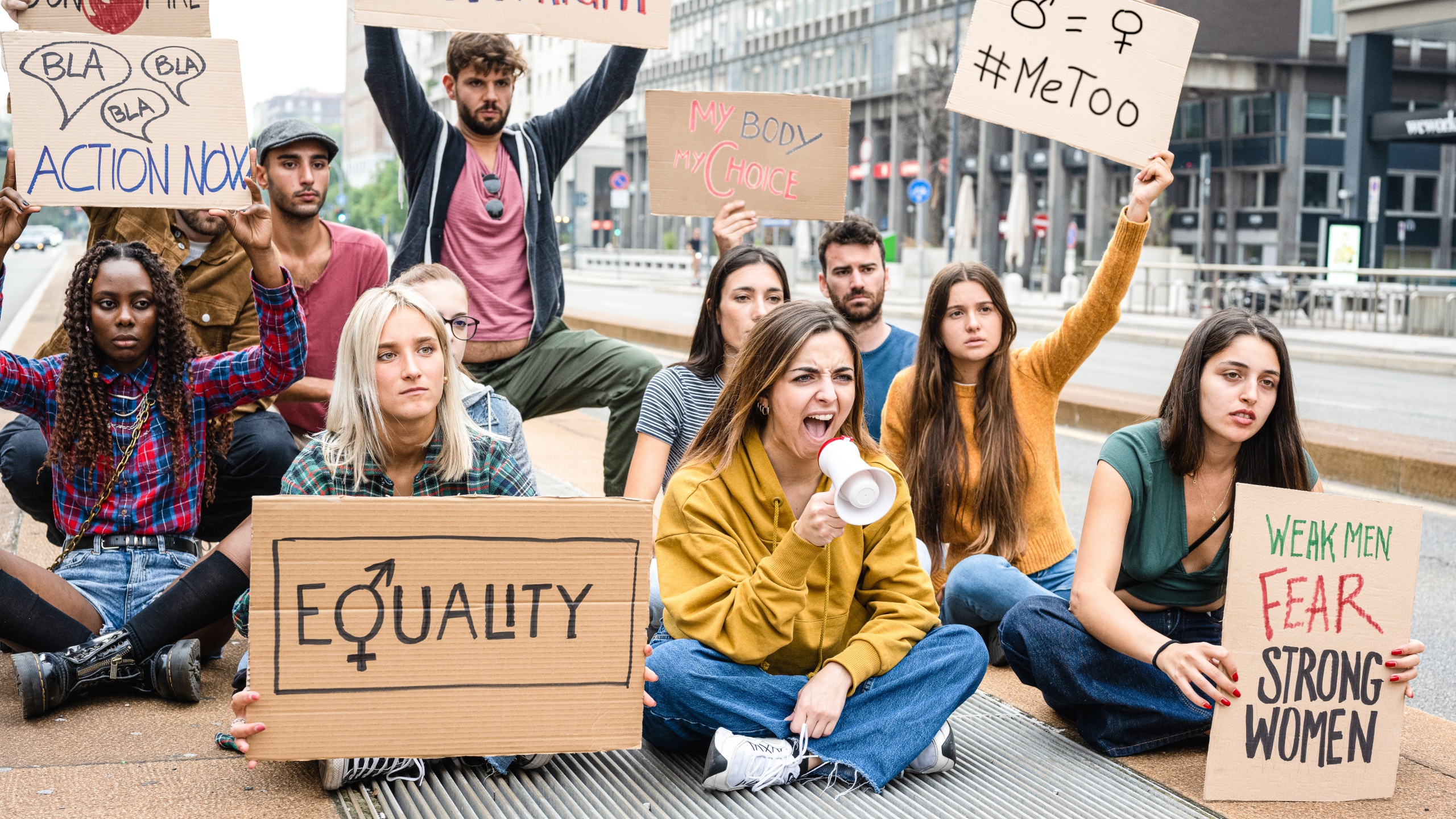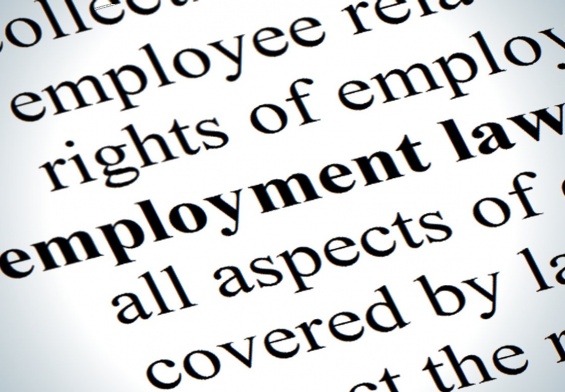Originally posted on: https://www.tyhyderally.com/2024/01/19/the-metoo-revolution-sexual-harassment-law/
The #MeToo movement, a groundbreaking social reckoning against sexual harassment and assault, has reverberated powerfully through the corridors of workplaces and courtrooms alike. This movement has not only brought to light the pervasive and often insidious nature of sexual misconduct but has also catalyzed a wave of significant legal reforms and societal shifts. For employment lawyers, this era is not just about witnessing change; it’s about actively participating in a transformative legal landscape. The movement has expanded the horizons of legal practice, challenging long-standing norms and prompting a reevaluation of workplace policies and legal strategies. In this article, we will delve into the heart of these changes, exploring the groundbreaking legal precedents set in the #MeToo era, the proactive strategies employers are adopting, the empowerment of employees in understanding and asserting their rights, and the crucial role of bystander intervention. This exploration aims to provide a comprehensive understanding of the evolving dynamics of sexual harassment law and its implications for both legal practitioners and the broader workforce.
Breaking the Barrier: Landmark Legal Precedents in the #MeToo Era
The #MeToo era has been pivotal in reshaping the legal framework surrounding sexual harassment, marked by several landmark legal precedents that have redefined the boundaries of legal recourse and employer accountability. One of the most significant shifts has been in the realm of mandatory arbitration. Traditionally, mandatory arbitration clauses in employment contracts compelled victims of sexual harassment to resolve their disputes in private, away from the public eye and the judicial system. This often resulted in a lack of transparency and a sense of injustice for the victims. However, the #MeToo movement has illuminated the inherent flaws in this system, leading to groundbreaking changes. For instance, states like California have taken bold steps by passing legislation that prohibits mandatory arbitration in sexual harassment cases, thereby granting victims the right to take their cases to court. This move not only enhances access to justice but also serves as a deterrent to potential offenders by increasing the visibility of such cases.
The legal definition of what constitutes sexual harassment has undergone a significant expansion. The traditional view, which often limited harassment to clear, physical acts, has been broadened to include more subtle forms of misconduct. Courts are increasingly recognizing that a hostile work environment and quid pro quo harassment, where job benefits are contingent on sexual favors, are equally damaging and actionable. This broader interpretation aligns with the realities of workplace dynamics, acknowledging that harassment can be psychological, verbal, and non-physical. Additionally, the concept of bystander accountability has gained legal traction. The emerging ‘duty to intervene’ places a responsibility on witnesses of harassment, encouraging them to report and address such behaviors. This legal development is crucial in shifting workplace culture, as it promotes a collective responsibility towards maintaining a respectful and safe environment. It empowers employees to act, not just as passive observers, but as active allies in the fight against harassment.
These legal developments represent a seismic shift in the approach to sexual harassment, reflecting a deeper societal change in attitudes towards such behavior. They signify a move towards greater transparency, accountability, and inclusivity in defining and addressing workplace misconduct. For employment lawyers, these changes offer new avenues for advocacy and litigation, while for employers and employees, they mark a new era of heightened awareness and responsibility. The #MeToo movement has thus been instrumental in breaking barriers and paving the way for a more just and equitable workplace.
Building a Wall of Defense: Proactive Strategies for Employers
In response to the #MeToo movement, employers are increasingly recognizing the importance of proactive strategies to prevent sexual harassment in the workplace. A key element in this defense is the implementation of comprehensive education and training programs. These programs go beyond mere formalities; they are designed to create a deep understanding of what constitutes sexual harassment, including its subtler forms. By educating employees about the nuances of harassment, the importance of bystander intervention, and the standards of appropriate workplace conduct, employers can foster a more respectful and inclusive work environment. Additionally, these training sessions provide a platform for discussing scenarios and responses, thereby preparing employees to handle potential situations effectively. This proactive approach not only helps in preventing incidents but also demonstrates the employer’s commitment to maintaining a safe workplace.
Another critical aspect of building a robust defense against sexual harassment is the establishment and enforcement of zero-tolerance policies. These policies need to be clearly articulated, outlining the consequences of engaging in harassment and the procedures for reporting incidents. However, the effectiveness of these policies lies in their implementation. Employers must ensure that there are clear, confidential, and accessible reporting channels, and that all complaints are taken seriously and investigated promptly and impartially. This approach sends a strong message to all employees that harassment will not be tolerated and that the safety and dignity of every individual are paramount. Furthermore, it’s essential for employers to create an environment where employees feel safe to report harassment without fear of retaliation. This requires a consistent commitment from the top levels of management and a culture of open communication. Regular check-ins, anonymous feedback mechanisms, and open-door policies can be effective in encouraging employees to speak up about their concerns.
Building a wall of defense against sexual harassment involves a multifaceted approach. It requires a combination of comprehensive education, strong and enforceable policies, and a workplace culture that promotes respect, safety, and open communication. By adopting these proactive strategies, employers not only comply with legal requirements but also contribute to a positive workplace environment, which is essential for the well-being and productivity of all employees. In the #MeToo era, these practices are not just recommended; they are essential for any organization committed to fostering a respectful and harassment-free workplace.
Arming Yourself with Knowledge: Protecting Yourself from Harassment
In the wake of the #MeToo movement, it has become increasingly important for individuals to arm themselves with knowledge about their rights and the mechanisms available for protection against sexual harassment. Understanding one’s legal rights is the first line of defense. Federal and state anti-discrimination laws, such as Title VII of the Civil Rights Act, provide a framework for what constitutes workplace harassment and the rights of those affected. However, the legal landscape can be complex, and staying informed about these laws is crucial. Resources like the Equal Employment Opportunity Commission (EEOC) website, legal aid organizations, and even employee handbooks can offer valuable guidance. Being aware of company-specific policies and procedures for handling harassment claims is equally important. This knowledge not only empowers individuals to recognize when their rights are being violated but also provides them with the confidence to take appropriate action.
Documenting instances of harassment is another critical step in protecting oneself. This involves keeping a detailed record of any incidents, including dates, times, locations, witnesses, and a description of the behavior. Documentation serves as a tangible record of the events and can be invaluable if legal action becomes necessary. It’s important to note that documentation should be thorough and factual, avoiding emotional language to maintain its credibility. In addition to documenting incidents, being aware of the company’s reporting procedures is essential. Knowing whom to approach, whether it’s a supervisor, human resources representative, or a designated officer, and understanding the process can make it easier to navigate what can be a daunting experience.
Seeking support is another key aspect of protecting oneself from harassment. This can involve confiding in a trusted colleague, supervisor, or human resources representative. Building a support network within the workplace can provide not only emotional backing but also practical advice and assistance. It’s important to remember that harassment can have significant emotional and psychological impacts, and seeking professional counseling or support groups can be beneficial. Additionally, in situations where an individual feels uncomfortable or unsafe reporting the harassment internally, exploring external avenues such as legal counsel or contacting the EEOC can be necessary steps.
Stepping Up and Speaking Out: The Power of Bystander Intervention
In the context of the #MeToo movement, the role of bystanders in preventing and addressing sexual harassment has gained significant attention. Bystander intervention is a powerful tool in the fight against workplace harassment, as it involves individuals who are not directly involved in the situation but have the power to influence or stop inappropriate behavior. Recognizing the red flags of harassment is the first step in effective bystander intervention. This includes being aware of not just the overt forms of harassment like unwanted physical contact or explicit remarks, but also the more subtle signs such as inappropriate jokes, exclusionary behavior, or any form of communication that makes someone uncomfortable. By staying vigilant and recognizing these behaviors, bystanders can play a crucial role in preventing a situation from escalating.
Speaking up safely is a critical aspect of bystander intervention. It involves addressing inappropriate behavior in a manner that is direct yet non-confrontational. This could mean calling out the behavior at the moment, if it feels safe to do so, or reporting it to a supervisor, human resources, or through a confidential hotline. The key is to act in a way that supports the victim and makes it clear that the behavior is unacceptable. However, it’s important to assess the situation and ensure that intervening won’t escalate the situation or put the bystander or victim at risk. In cases where direct intervention isn’t safe or practical, reporting the incident to the appropriate authorities within the organization is a responsible course of action.
Supporting the target of harassment is another crucial component of bystander intervention. This can involve offering empathy and support to the person being harassed, encouraging them to report the incident, and being willing to be a witness if needed. Sometimes, just knowing that someone else acknowledges and disapproves of the inappropriate behavior can be immensely comforting to the victim. Additionally, bystanders can play a role in changing the workplace culture by actively promoting an environment of respect and zero tolerance for harassment. This might involve participating in or even initiating discussions about appropriate workplace behavior, supporting company training initiatives, and being a role model for respectful behavior.
Ty Hyderally: A Champion in the Fight Against Sexual Harassment
Hyderally & Associates specializes in handling two types of sexual harassment claims in New Jersey: quid pro quo and hostile work environment. Quid pro quo harassment occurs when an employer or supervisor demands sexual favors in exchange for an employment benefit, such as a promotion or job security. This type of harassment can be explicit or implied, making it a nuanced area of law. On the other hand, hostile work environment sexual harassment involves severe or pervasive conduct motivated by an employee’s gender, which creates an intimidating, hostile, or offensive working environment. This can include inappropriate sexual comments, touching, antagonistic behavior, and unequal treatment based on sex.
Our firm’s approach recognizes that sexual harassment is not always overtly sexual but can be motivated by gender-based discrimination. For instance, a case where a female employee is subjected to additional tasks and sexist comments, while her male counterparts are not, falls under hostile work environment sexual harassment. Hyderally & Associates’ expertise in these areas makes us a vital resource for those facing such challenging workplace situations.
For anyone believing they have been subjected to sexual harassment, Hyderally & Associates offers our extensive experience with the New Jersey Law Against Discrimination. We provide personalized legal advice, helping clients understand their rights and decide if pursuing a claim is the right course of action. Our commitment to addressing workplace harassment and advocating for victims’ rights places us at the heart of the ongoing battle against workplace sexual misconduct and for employee rights.
Forging Ahead: Empowering Change in the #MeToo Era
In conclusion, the #MeToo movement has not only sparked a critical conversation about sexual harassment but has also prompted a significant evolution in the legal and corporate landscape. This transformative era has seen a shift from passive acknowledgment to active engagement in addressing and preventing harassment. Employment lawyers now find themselves at the forefront of this change, equipped with new legal precedents and a broader understanding of harassment. Their role extends beyond litigation; they are now educators, policy advisors, and advocates for workplace equality.
As we move forward, the lessons learned from the #MeToo movement will continue to resonate. The fight for a safer and more equitable workplace is ongoing, and it requires the collective effort of lawyers, employers, employees, and bystanders alike. Through continued legal advocacy, policy development, education, and cultural change, we can hope to not only address the issues highlighted by the #MeToo movement but also pave the way for a future where workplace harassment is a relic of the past. In this era of heightened awareness and empowerment, there is a real opportunity for lasting change, making the workplace a safe and respectful environment for all.




